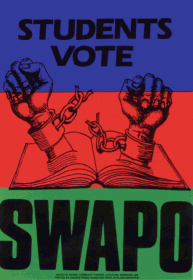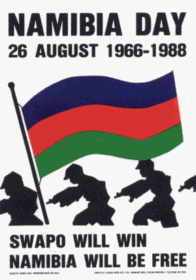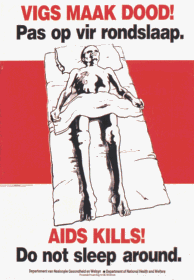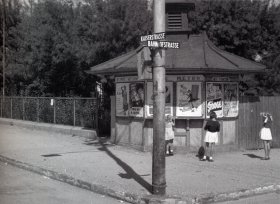|
This book is a collaboration of the National Archives of Namibia, and the Basler Afrika Bibliographien in Switzerland, a privately run archive of
Africa related material which includes a large, but relatively unknown collection of african posters. It's holdings have been the subject of
an excellent previous publication (Miescher, Giorgio; Henrichsen, Dag (eds.): African posters).
The new publication is the result of a six year research project and goes into more detail about the role of posters in
the history of Namibia, a sparsely populated country in Southwest Africa
which obtained independence from South Africa in 1990 after a twenty year liberation struggle.
Several workshops and exhibitions in Basel and Windhoek contributed to the project.
It is composed of about 20 articles, starting with printing techniques, continuing with tourism advertising, health and AIDS posters, political
posters for (and against) the SWAPO, the political party and former underground movement
that led the liberation struggle, and finishing with contemporary advertising posters, discussing for example "the mysterious demographics
of beer drinking".
The website of the publisher has the full table of content together together with 17 sample pages.
A special 40 page chapter is devoted to "The Photographic Poster Archive", i.e. photographic records kept as part of the poster collection,
pointing out that "Photographs often constitute the sole material evidence we have of the existence of particular posters and related visuals such as
placards, flyers and T-shirts." The book cover shows two examples of poster pictures in their context.
The diverse material from the different authors is smoothly joined without overlap by the steady hand of experienced editors, is clearly
written and easy to read, and is supported by detailed image descriptions, notes, a 6 page bibliography and an index. In addition, the book is well designed.
|








